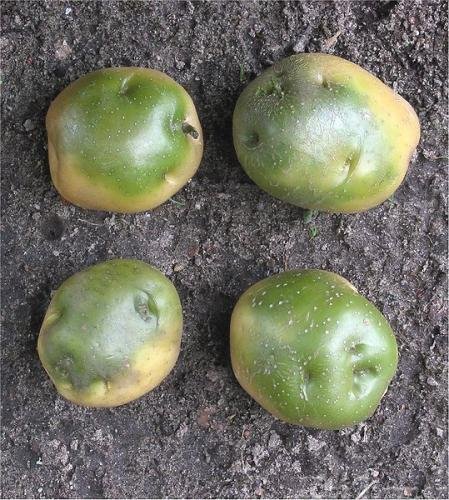Popular poisons part5

Pretty, dope, whitened: Cases of poisoning with dope, bleached and belladonna in practice are not so rare as we would like. The active substances of these plants are the poisons giociamine, scopolamine and atropine, causing paralysis of the heart. And first these poisons act excitantly on the nervous system, and then paralyze it. Poisoning usually develops after eating the berries of these plants. Symptoms are fixed after 10-20 minutes after the poison has entered the gastrointestinal tract. First, the patient has a sharp arousal, anxiety and confusion, often accompanied by delirium and intimidating hallucinations. Then the vessels of the face, neck and chest expand, the pulse becomes faster, and the bladder becomes paralyzed. After this, a coma develops and respiratory arrest occurs due to paralysis of the respiratory center. For children, the lethal dose is only 4-5 berries belladonna (belladonna).
Cicuta: Cicuta poisoning (water pain of the head) occurs when eating its roots. It grows along the banks of water bodies and in moist wetlands. Its fleshy rhizome sweetish to the taste and by external signs resembles some edible roots. The main distinctive feature of the rhizome of the cicuta is the presence of cavities on the incision. Its poison - cicutotoxin - is found in all parts of the plant. Like strychnine, it refers to the so-called convulsive poisons. Cicutotoxin stimulates the vagus nerve and reflex spinal functions. When poison enters the gastrointestinal tract, vomiting, cyanosis, general agitation, salivation with the formation of foam and severe seizures develop. Death occurs as a result of paralysis of the nerve centers.
Aconite: Poisoning with aconite is mainly found in the areas of its growth - in the Caucasus, where this plant of the family of buttercups is quite widespread. The cause of poisoning is most often the inept treatment of its decoctions or infusions, used in folk medicine as a means of joint pain. The active ingredient aconite - alkaloid aconitine - is found in all parts of plants and extremely toxic: the lethal dose for an adult is only 0,003-0,004 g. This poison is often used in the fight against rodents and large predators, and also as an insecticide. Aconitin is classified as a group of poisons that cause paralysis of the heart. Once in the digestive tract, it first excites the nervous system, and then paralyzes it. The picture of poisoning develops quickly enough: within 2-4 hours. First, there are characteristic tingling sensations in the pharynx, tongue, stomach and esophagus, then itching and salivation develop. Soon the first is replaced by numbness, and breathing and pulse, initially rapid, pass into bradycardia and shortness of breath. Consciousness of the patient, as a rule, is saved, cramps are also observed very rarely.
Vegetable products: Not only the plants listed above can be poisonous, but also ordinary foods, such as potatoes. During the winter, if there is an improper storage, sprouts appear on the potato, and the glucanide solanine accumulates in the tubers themselves. A high content of solanine is also found in tubers that have a green color. If properly stored, the solanine content in potatoes should not exceed 0.001%, otherwise people who eat it may develop symptoms of acute poisoning. The picture of poisoning is expressed in burning tongue, bitterness in the mouth, nausea and diarrhea, but there are no fatalities and gatherings.
Vegetable products can acquire toxic properties under the influence of a fungal infection, most often affecting cereals. Poisonings with such products have been called mycotoxicosis (ergotism and aleukia), which develop as a result of eating ergot cereal affected by ergot. The impurity of the latter to benign flour makes the bread poisonous.
Poisoning of ergot manifests itself in two forms: gangrenous and convulsive. The latter is characterized by general gastrointestinal symptoms and changes from the central nervous system, general excitement, convulsions and mental disorders. With severe form of poisoning, tetanus is possible. For the gangrenous form is characteristic of necrosis of the auricles, fingers, the tip of the nose, accompanied by sharp pains. The emergence of alimentary-toxic aleukia is associated with eating grain that has overwintered under snow. Over the winter, it grows with fungi and causes poisoning, resembling sepsis. At the same time, hyperthermia, sore throat and other symptoms characteristic of necrotic sore throat are observed. However, the true symptom of aleukia is the damage to the organs of hematopoiesis, as a result of which a fatal outcome is possible.
The end.
This post has received a 0.05 % upvote from @drotto thanks to: @v0inter.
Your Post Has Been Featured on @Resteemable!
Feature any Steemit post using resteemit.com!
How It Works:
1. Take Any Steemit URL
2. Erase
https://3. Type
reGet Featured Instantly & Featured Posts are voted every 2.4hrs
Join the Curation Team Here | Vote Resteemable for Witness